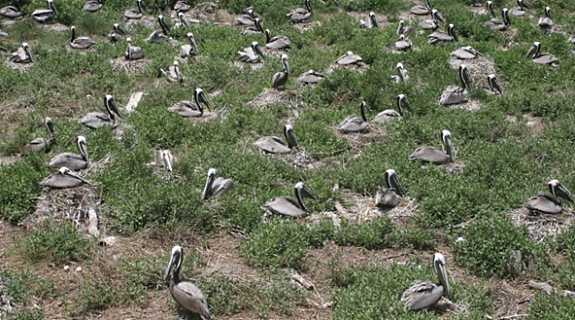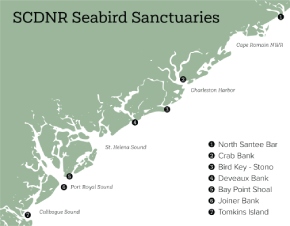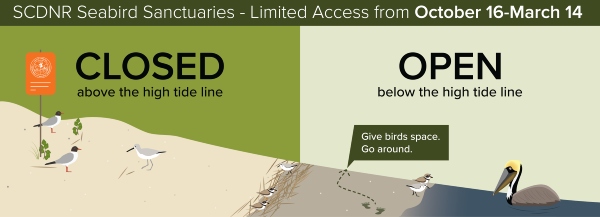Coastal Birds in South Carolina - Seabird Sanctuaries
Most of South Carolina's nesting seabird populations are in decline. All of these colonial species are subject to loss of suitable nesting habitat, therefore, South Carolina Department of Natural Resources (SCDNR) seeks to protect areas where seabirds presently nest. Three seabird nesting islands were given Sanctuary Status in 2006.
They are SCDNR protected islands that host multiple bird species and thousands of nesting pairs of seabirds. For example, in 2013, Deveaux Bank had 25% of the entire Atlantic coast's population of nesting Brown Pelicans with 3,600 pairs nesting on this seabird sanctuary.
Nesting seabirds can be negatively affected by disturbance. When adults are flushed from their nests, eggs and chicks are vulnerable to predation and exposure to adverse weather conditions. Loss of a single colony site can result in lasting impacts to statewide populations. Crab Bank, Deveaux Bank and Bird Key Stono are closed to public access during the nesting season (March 15-October 15). Tomkins Island is closed year-round.

In addition to the Seabird Sanctuaries, other areas where seabirds and shorebirds nest are protected by posting signs around nesting areas on beaches. Because these birds nest directly on the ground and have well camouflaged eggs and chicks, people walking down the beach can unwittingly step on eggs, or flush incubating adults leaving eggs and young susceptible to overheating and predation.
Posting signs and symbolic fencing around nesting areas gives nesting birds a buffer in which pedestrian traffic is restricted. SCDNR posts signs on public and private beaches where birds traditionally nest. If you would like to help in posting nesting areas, or find an unposted area where seabirds or shorebirds are nesting, please contact our staff.
Additional information about Seabird Sanctuaries and closed areas can be found on the SCDNR
Managed Lands or SCDNR Barrier Islands StoryMap” webpages.



